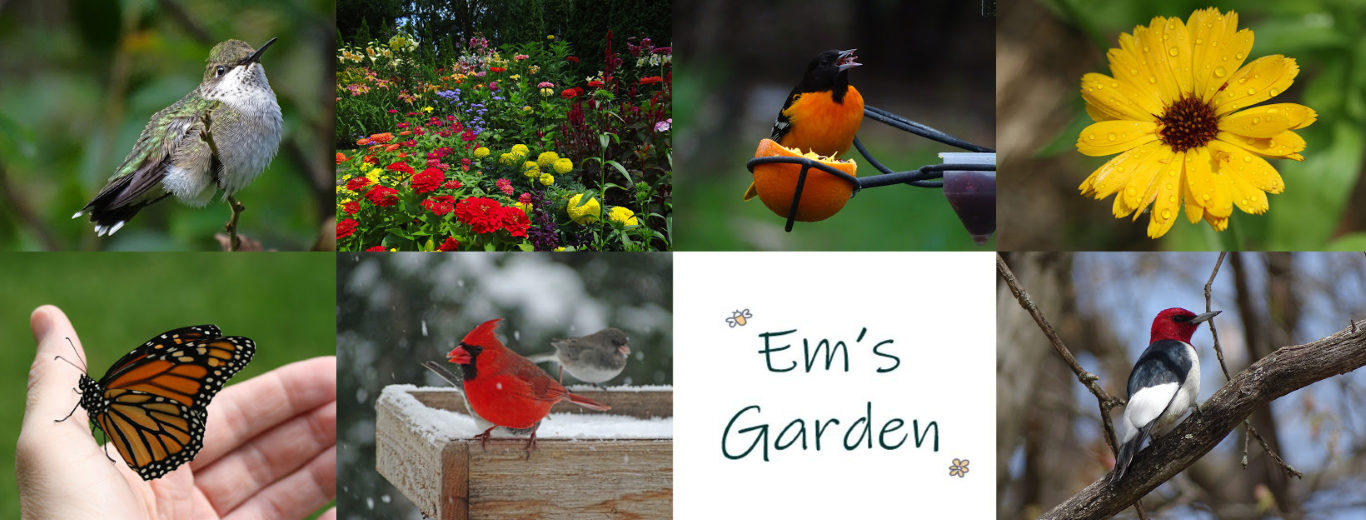Based on the zany behavior of the birds in my neighborhood over the last six weeks I’m tempted to say that PEANUTS are the secret to attracting birds to your yard, but the real answer is water. You can entice some birds with fancy seed mixes or a really well-designed bird feeder or bird house, but water will always attract the greatest variety of species.
Each spring beautiful warblers and tanagers migrate through my neighborhood. Usually the birds stay at the tops of the oak trees eating flying insects, so they have little interest in my bird feeders. But they travel thousands of miles from Central and South America on their way to Canada and they need to eat, drink, bathe and rest along that journey. I’ve had great success using birdbaths to tempt the shy birds into my yard.
After years of trying birdbaths in many different shapes and sizes, I’ve finally found a set-up that is very versatile and attracts birds like crazy. I use Wild Birds Unlimited (no affiliation) pole systems to create all my feeding stations. Late last year I discovered that they sell a birdbath attachment for their pole systems. It consists of a metal ring and a shallow, plastic bowl.
You just twist the pole into the ground where you want to put your birdbath and then simply attach the metal ring to the pole. The bowl has a lip on the underside that allows it to fit snugly into the ring.
What I love about this system is that you can have more than one bath on a pole, and by adding pole segments you can make the baths sit higher or lower off the ground if you need clearance to mow, etc.
I was always under the impression that the clay and ceramic birdbath bowls were the best. I was skeptical that birds would want to take a bath in a thin, plastic bowl, but boy was I was wrong. In May I looked out the window just in time to see a Scarlet Tanager and five different species of male warblers drinking and bathing from the two birdbaths you see above. The amount of color concentrated in that one little area was absolutely breathtaking.
Regardless of what type of birdbath you use, there are four ingredients that will make yours the most popular birdbath in the neighborhood. The first is location. I assume you wouldn’t be comfortable taking a bath in the middle of your yard. Well most birds aren’t either. They need places to take shelter if a hawk or cat appears. I have three birdbaths nestled under some arborvitaes. The timid warblers love this location because they can sneak over from the oaks into the arborvitaes and randomly pop out at the birdbaths when there aren’t any other birds or critters around.
When I peek out at these baths from my kitchen sink window I almost always see at least one or two birds splashing around or getting a drink.
The second ingredient is a shallow bowl. Birds—especially small songbirds—are wary about bathing when the depth of the water gets to be more than 3 inches. And that leads to the third ingredient—flat stones. If your birdbath is too deep you can always add some large, flat stones to the bath so the birds can bathe without fear of drowning in the deeper water.
The final ingredient is my secret weapon—a “waiting room.” On hot days a birdbath can be very popular and birds have to wait for their turn. You’ll keep more of them around if you offer them a place to land near the birdbath. Even if there are trees or shrubs in the immediate area, I always add a metal garden trellis for them to perch upon as they wait. I have several cheap ones in different sizes that I bought at a craft store many years ago.
They simply push into the ground so I can move them around as needed. During migration season it isn’t unusual to see up to a dozen birds sitting on a trellis waiting to take a bath. They’ll also perch on it to preen afterward. And while I’ve never seen a hummingbird take a drink or bathe in one of my birdbaths, I have seen them rest on the trellises after visiting my flowers. Bonus!
If these tips don’t lure more birds to your yard and garden, remember, there’s always peanuts!








